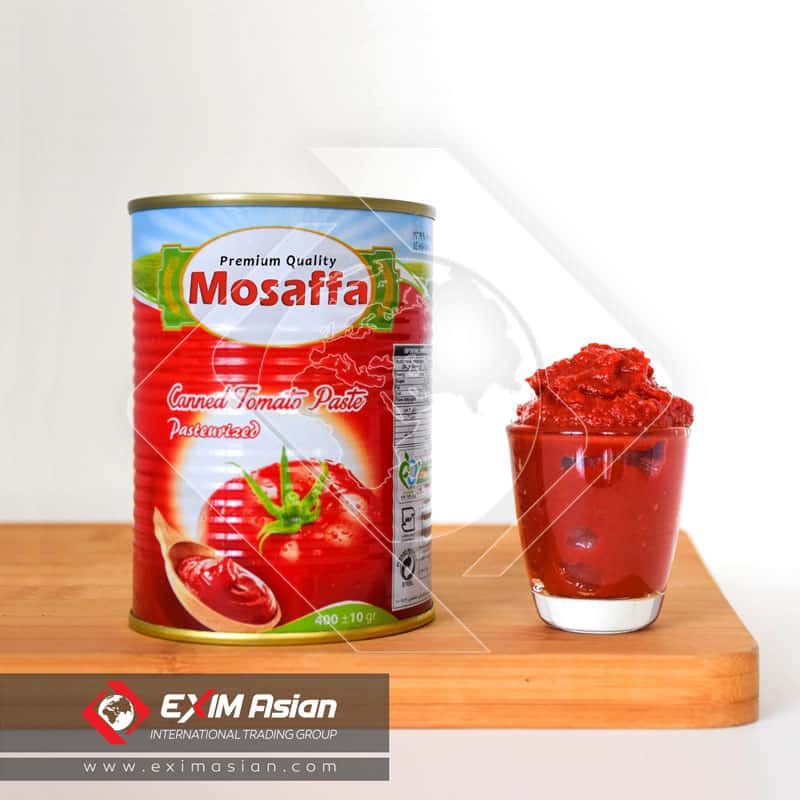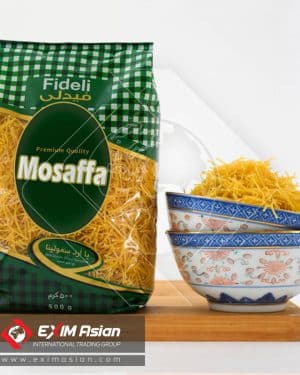Description
Tomato Paste Specifications
Item | Value |
|---|---|
Product Name | Tomato Paste |
HS code | 20029011 |
Tin Type | Hard Open Lid
Easy Open Lid |
Ingredients | Fresh Tomato, Salt, Water |
Trademark | Mosaffa or Buyer’s brand |
Brix | 18% up to 30% |
Color | Natural Tomato Red Color |
Shelf Life | 24 months |
Mold Count | Less than 40% |
PH | Maximum 4.3 |
Place of Origin | Iran |
Order Information (Payment, Packaging & Delivery)
Item | Value |
|---|---|
Min Order | 1 FCL |
Sample Submission | Free Sample Available |
Payment Method | LC , Advanced Payment |
Certificates | ISO 9001, ISO 22000, HACCP |
Lead Time | 10 Days |
Retail Packing | 400g, 700g, 800g, 4.5kg, 10kg, 17kg |
Packaging Details
Item | Value |
|---|---|
Canned | 400 gr, 800 gr, ( 4.5kg Available to Customer Order ) |
Jar | 700 gr |
Tin | 10 kg, ( 17 kg Available to Customer Order ) |
Tomato Paste Gallery
Top Tomato Producing Countries
Country | Production (T) |
|---|---|
China | 59,514,773 |
India | 20,708,000 |
Pakistan | 16,601,098 |
Turkey | 12,750,000 |
United States | 10,910,990 |
Egypt | 7,297,108 |
Iran | 6,177,290 |
Italy | 6,015,868 |
Spain | 5,163,466 |
Mexico | 4,243,058 |
Top Tomato Paste Importing Countries
Country | Importion (Million US$) |
|---|---|
United States | $2.900 |
Germany | $1.500 |
France | $719 |
United Kingdom | $622 |
Russia | $525 |
Netherlands | $335 |
Canada | $319 |
Poland | $268 |
Spain | $173 |
Sweden | $160 |
Export of Tomato Paste
Iran’s tomato paste exports have been on the rise in recent years, with more than 25 percent growth. Due to its diverse climate, Iran has always been among the top 10 tomato producers in the world.
Tomatoes are grown almost all year round in different parts of the country, thanks to Iran’s four seasons. For example, in hot seasons, cold regions such as Khorasan, Zanjan and Golestan, and in cold seasons, tropical regions such as Fars and Bushehr produce tomatoes.
Italy, China, the United States, and Spain have the largest exports of tomato paste in the world. Iran is ranked sixth among the top 10 exporters of tomato paste in the world. The main importers of Iranian tomato paste are Iraq, Afghanistan, and Russia. interestingly, the quality of tomato paste produced in Iran is far higher than in Turkey.
EXIM Asian International Trading Group is one of the best Iran Tomato Paste supplier and exporter. we guarantee the quality and you absolutely will be satisfied.
Iran's Tomato Paste Export Volumes Surge in 2020
Iran's Tomato Paste export - Value Country - wise in FY20-21 (Million USD)
Tomato Paste vs Tomato Puree
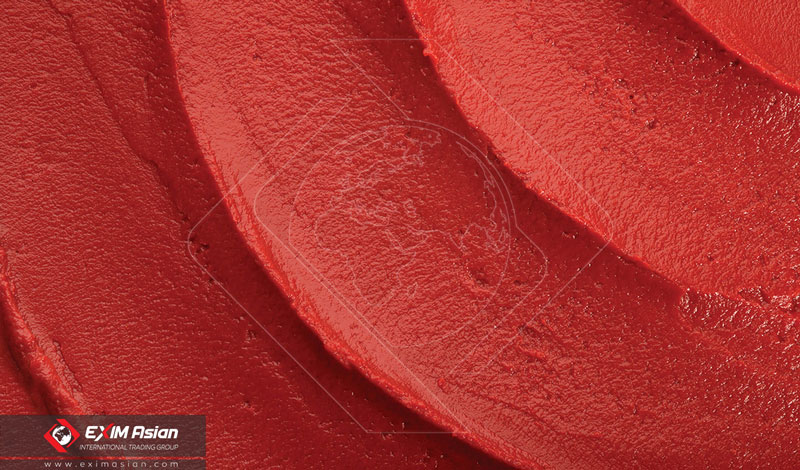
Tomato Paste
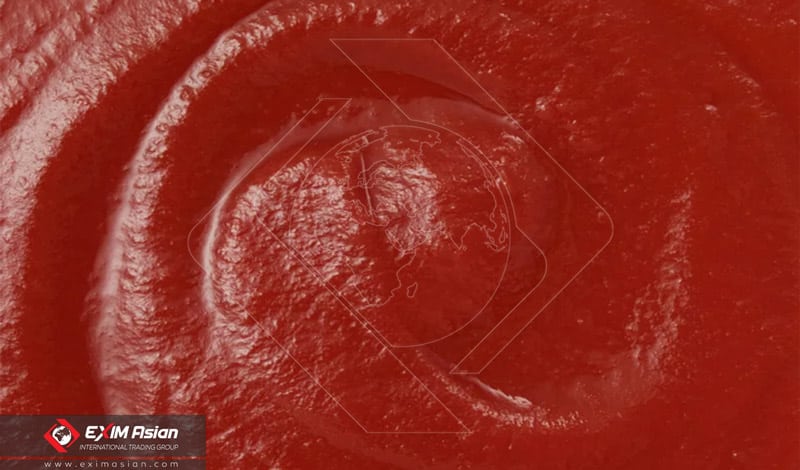
Tomato Puree
Tomato puree and paste share the same main ingredient. However, there are notable distinctions that make them two vastly different ingredients:
1. Preparation Method
Tomato puree is made by lightly cooking tomatoes and then pureeing the softened product into a liquid.
Tomato paste, meanwhile, has been simmered and cooked for a long time to take its texture past the consistency of a paste to something thicker. After being cooked for a while, the tomato paste is strained to remove the seeds and skins of the tomatoes. Then it is cooked longer to achieve the paste-like consistency, which is sometimes used to thicken sauces and gravies.
2. Consistency
Tomato puree is much thinner than tomato paste.
If you were to pour a can of puree into an unheated pan, the liquid would spread and fill the pan like a thick broth. If you were to empty a can of paste into an unheated pan, its firm consistency would cause it to remain largely intact.
3. Intensity of Flavor
Tomato paste has a richer taste than tomato puree due to its long cooking time. The hours spent over heat brings out more intense flavors, resulting in a product that tastes somewhat like a dried tomato.
Because tomato paste is cooked for so long, the flavor of the tomatoes mellows out and isn’t as bright and acidic as fresh tomatoes are. Instead, it develops a sweet, full-bodied flavor that can add a punch of tomato flavor and richness to your dishes.
4. Uses
Tomato paste is often used to thicken sauces, or to add flavor to soups or stews. Tomato puree is used to form the base of thinner tomato-based sauces and condiments like salsas, hot sauce, marinara sauce, or pizza sauce.
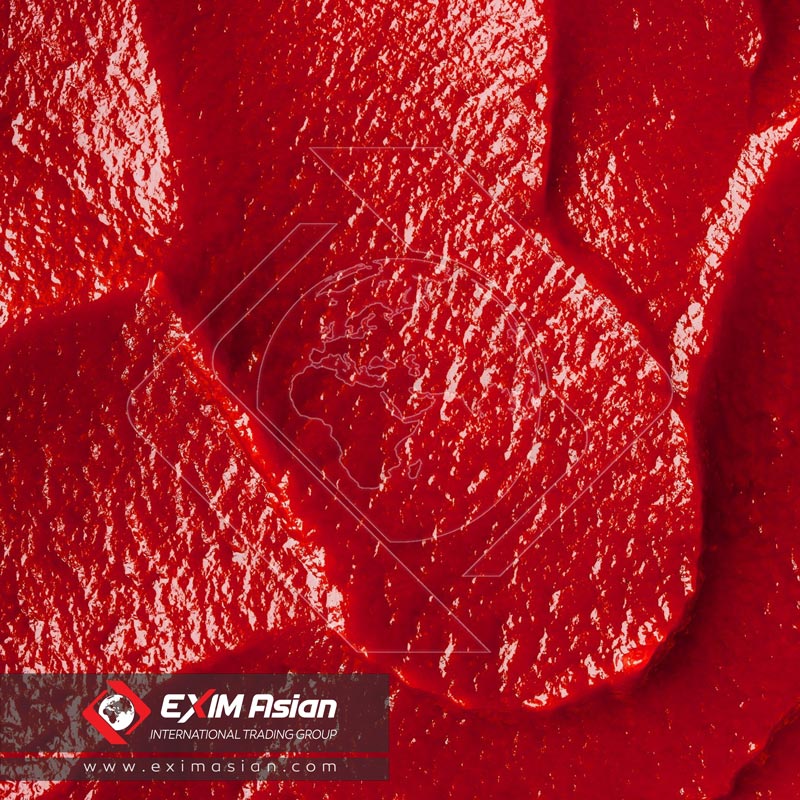
Specifications of Tomato Paste
Concentration (BRIX)
Tomato Puree: if the food contains not less than 10% but less than 18% natural total soluble solids;
Tomato Paste: Tomato Concentrate that contains no less than 18% but less than 28% on natural tomato soluble solids.
concentration: Tomato Concentrate that contains at least 28% of natural tomato soluble solids
- Light concentration: 28 percent or more, but less than 32
- Medium concentration: 32 percent or more, but less than 38
- Heavy concentration: 38 percent or more.
PH: As the pH value is an important criteria in tomato puree and tomato paste, we have set the maximum pH 4.3
Mold Count:
Mold counts are only one of several methods for determining the acceptability of the finished product. Only the fungus rots are characterized by the presence of mold filaments. Mold Counts are not increased by the presence of rot caused by bacteria, virus or non-parasitic factors.
High Mold Counts confirm that large amounts of rotten material are present. The tolerance for Mold Count differs among various countries legislation.
Benefits
- Loaded of Vitamins and Minerals
Whether whole or as a sauce, tomatoes are rich in natural vitamins and minerals including Vitamin A, K, B1, B3, B5, B6, B7 and Vitamin C. It also contains potassium, folate, iron, magnesium, chromium, choline, zinc and phosphorus. With its high Vitamin C content, tomatoes are a natural beauty food, promoting healthy skin while manganese and potassium help your body build stronger bones and relieve muscle cramps. Vitamin A improves vision and prevents night blindness and macular degeneration.
- Prevents Cancer
Lycopene, a phytochemical compound that tomatoes are rich in, play a big role as an antioxidant that protects your body’s tissues from damages and free radicals. Several cancers, including prostate, cervical, mouth, pharynx, throat, stomach, esophagus, rectal, colon and ovarian can be prevented or reduced by tomatoes!
- Reduces Chronic Pain
If you are one of the millions of people who experiences mild to moderate chronic pain from inflammation (such as back pain, muscle pain or arthritis), tomatoes can provide relief and help prevent pain thanks to the high amount of bioflavonoids and carotenoids, which are known anti-inflammatory agents.
- Regulates Blood Sugar
Being a good source of chromium, tomatoes keep your blood sugar steady.
- LDL Cholesterol
Carotenoids in tomato paste can reduce the oxidation of the LDL cholesterol particles thereby preventing blockage of blood vessels.
- Reducing Asthma
Some research supports the role of lycopene in reducing risk of asthma by protecting the lungs from infection.
Tomato Paste Nutrition Facts
Serving Size: In 100 Grams
Nutritional Info | Value (%) |
|---|---|
Total Fat 0.5 g | 0 |
– Saturated fat 0.1 g | 0 |
Cholesterol 0 mg | 0 |
Sodium 59 mg | 2 |
Potassium 1,014 mg | 28 |
Total Carbohydrate 19 g | 6 |
– Dietary fiber 4.1 g | 16 |
– Sugar 12 g | |
Protein 4.3 g | 8 |
Vitamin C | 36 |
Calcium | 3 |
Iron | 16 |
Vitamin D | 0 |
Vitamin B-6 | 10 |
Cobalamin | 0 |
Magnesium | 0 |
Calories | 82 |
Storage Tips
Left over tomato paste in the can will keep in the fridge for 5 to 7 days after in an airtight container like a mason jar or pyrex storage container. You’ll know it’s gone bad if it starts to smell “off” or if it begins to mold.
Tomato paste will keep in the freezer for 2 to 3 months in an airtight container or freezer bag.


